VICTORIA – The Forest Practices Board is requesting a prompt decision from the Ministry of Environment on a request for a community watershed designation by water users at Anderson Lake between Pemberton and Lillooet.
The recommendation arose from a board investigation into a complaint by a representative of the water users. In March 2002, the complainant applied to government for a community watershed designation under the former Forest Practices Code to help protect its water supply from potential damage from forest practices. Over five years later, government has still not rendered a decision on that request.
In the meantime, the Ministry of Forests and Range approved plans to log in the watershed. The complainant asserted that logging could damage water resources and affect its pending community watershed application. The investigation found that BC Timber Sales Program and N’Quatqua Logging Company appropriately addressed the risks to water and logging plans were consistent with community watershed standards.
“While the licensees involved in this complaint appropriately managed the risks to water, the five-year delay in deciding on the community watershed application is unfair and unreasonable,” said board chair Bruce Fraser. “The board would like to see quick action by government on this application, and we are asking the Ministry of Environment to report on progress by July 31, 2007.”
The Forest Practices Board is B.C.’s independent watchdog for sound forest and range practices, reporting its findings and recommendations directly to the public and government. The board:
Erik Kaye
Communications
Forest Practices Board
Phone: 250-356-1586 or 1-800-994-5899
VICTORIA – Five licensees operating in the Sunshine Coast Forest District have received good marks in a Forest Practices Board audit report released today.
The board found the forest companies complied with legislative requirements for timber harvesting and road construction, maintenance and deactivation. In addition, licensees followed land-use plan directives such as protecting goat ranges and maintaining visual quality standards.
“The board is pleased with the performance of all licensees in this audit, and encourages them to continue their sound practices in the future,” said board chair Bruce Fraser.
The companies audited were: International Forest Products Ltd., Terminal Forest Products Ltd., Northwest Hardwoods, 9096 Investments Ltd., and F.A.B. Logging Co. Ltd. The audit examined harvesting, road and bridge activities conducted between Sept. 1, 2005 and Nov. 1, 2006.
The Forest Practices Board is B.C.’s independent watchdog for sound forest and range practices, reporting its findings and recommendations directly to the public and government. The board:
Erik Kaye
Communications
Forest Practices Board
Phone: 250-356-1586 or 1-800-994-5899
VICTORIA – The BC Timber Sales Program and timber sale licence holders in Fort St. John have received good grades from the Forest Practices Board for their operations under a Forest Practices Code pilot project.
In 1999, the provincial government passed legislation to enable results-based pilot projects under the former Forest Practices Code. Only two such pilot projects are active in British Columbia (Stillwater and Fort St. John), and the board audited the Fort St. John Code pilot project.
In the Fort St. John pilot area, licensees commit to measurable targets for forest practices and are subject to regular third-party verification of compliance. Board auditors were able to use some of this information to help measure licensee performance under the pilot regulation.
“The board was impressed with the high level of performance under this unique legislative framework,” said board chair Bruce Fraser. “The board will issue a bulletin on aspects of the Fort St. John pilot project in the coming months.”
The Forest Practices Board is B.C.’s independent watchdog for sound forest and range practices, reporting its findings and recommendations directly to the public and government. The board:
Erik Kaye
Communications
Forest Practices Board
Phone: 250-356-1586 or 1-800-994-5899
VICTORIA – Government and industry should implement preventative measures to counter the more frequent extreme peak flows in streams as a result of the mountain pine beetle epidemic, according to a Forest Practices Board special investigation released today.
The investigation used the Baker Creek watershed as a test case. Baker Creek, west of Quesnel, is a tributary to the Fraser River, where 75 per cent of the pine trees have suffered from mountain pine beetle infestation. The board used a well-established computer model, customized by UBC researchers to examine the pine beetle effect, for the report. Using a 40-year record of streamflows in Baker Creek, the model simulates expected changes in stream flow following the beetle attack and salvage harvesting.
The model indicates the MPB epidemic will increase stream flow by 60 per cent; clearcut salvage logging of beetle-infested trees could result in as much as a 92 per cent increase in stream flow, depending on the extent of the cut. According to the model projections, flood events that used to occur at 20-year intervals are now likely to take place every three to five years.
“Watershed assessments, which are no longer required under provincial legislation, are needed to help resource managers develop strategies for protecting drinking water, preserving fish habitat and preventing flooding,” said board chair Bruce Fraser. “Industry should re-evaluate bridges and culverts to anticipate the projected increase in stream flows from beetle-infested watersheds.
“More fundamentally, we need to consider hydrological impacts when planning harvesting in watersheds impacted by the beetle epidemic. The economic objective of salvaging beetle-killed trees quickly, before they lose value, needs to be balanced against the hazards created by higher stream flows.”
Trees modify stream flow by intercepting snow in the canopy and returning it to the atmosphere, thus reducing the amount of snow reaching the ground. In the spring, forest shade reduces snow melt rates. Beetle-killed trees are less effective in providing shade and interception, while clearcut salvage logging removes this effect completely.
“It’s important to stress that there is no simple solution for resource managers facing the difficult choices resulting from the pine beetle crisis,” said Fraser. “Even if we stopped all salvage logging tomorrow, the standing dead trees would be vulnerable to fires, which would have a similar effect on peak flows and could also increase the risk of contamination in streams.”
The Forest Practices Board is B.C.’s independent watchdog for sound forest and range practices, reporting its findings and recommendations directly to the public and government. The board:
Erik Kaye
Communications
Forest Practices Board
Phone: 250-356-1586 or 1-800-994-5899
VICTORIA – Stands of trees killed by the mountain pine beetle still provide environmental benefits and potential timber value if left standing, according to a Forest Practices Board special report released today.
The report examined pine stands affected by the 1979 mountain pine beetle attack in the southern Quesnel forest district. Trees left standing or regrown since that outbreak have developed unique structural features that now provide valuable wildlife habitat, 26 years after the original beetle attack. The board found that those trees that survived the pine beetle attack grew faster than prior to the attack, and may represent a source of mid-term timber supply.
“As B.C. grapples with the current mountain pine beetle epidemic, our work suggests the economic rationale for rapid salvage logging should be balanced with the benefits of retention of infested trees to enhance forest diversity and protect environmental values,” said board chair Bruce Fraser. “This is consistent with the recent advice of the Chief Forester for designating larger areas for retention in beetle-infested pine stands.”
It should be noted the area studied is in a cool, dry climate zone in the Interior of the province. The Ministry of Forests and Range is conducting further studies to determine if the results are valid for the moister climate zones, which are the focus of the current mountain pine beetle epidemic.
The Forest Practices Board is B.C.’s independent watchdog for sound forest and range practices, reporting its findings and recommendations directly to the public and government. The board:
-30-
Erik Kaye
Communications
Forest Practices Board
Phone: 250-356-1586 or 1-800-994-5899
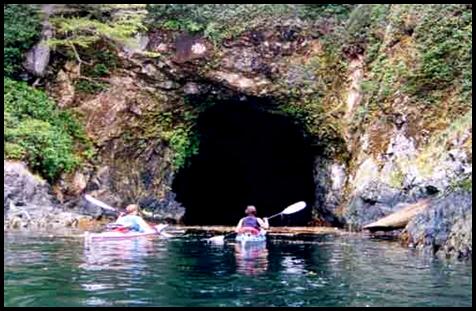
Figure 1. Paddlers cautiously approach a cave in Barclay Sound, Vancouver Island.
There is something special, and especially sensitive, in BC’s coastal forests – karst. Karst is formed by water dissolving limestone over many thousands of years, creating shafts, sinkholes, caves, disappearing streams and springs. About 10% of BC has bedrock that is suitable for karst formation, largely concentrated on Vancouver Island and Haida Gwaii. The abundant rainfall of BC’s coastal rainforest makes our karst features among the most dynamic on earth. That’s why the Forest Practices Board has recently published a special report on protecting karst in coastal British Columbia.
The most obvious public interest in karst is recreational - BC’s karst caves attract caving enthusiasts from around the world to marvel at the stalactites, stalagmites, “moon milk” and “cave pearls” that are deposited during the cave formation. Karst caves also have scientific value because they preserve fossil records from prehistoric times. They have cultural values as well – karst caves were used by First Nations peoples for shelter, burial sites and ceremonial purposes. However, karst is significant for many other reasons. Dissolved nutrients, fractured bedrock and well-drained soils make karst terrain highly productive for growing forests, as well as supporting rare and diverse animal and plant communities. Overall, karst is a valuable resource with direct economic and environmental values.
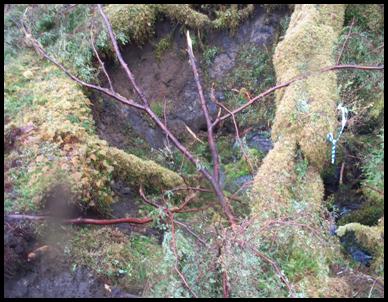
Figure 2 Small sinking stream fails to indicate the fragile nature of this karst ecosystem. Photo courtesy of MoFR.
Karst terrain is particularly sensitive to damage from forest practices because its fractured nature allows water to move rapidly through it. Logging debris, sediments and pollutants introduced into karst by water flows, as well as road building, can all damage karst features. Heavy equipment and blasting can cause physical damage, soil erosion and sediment transfer, interrupt natural surface and subsurface drainage patterns, and collapse caves, especially those with thin ceilings. To avoid damage, forest practices do not necessarily have to avoid karst areas, but will often have to be modified.
Preventing damage to karst features is easier said than done. Karst tends to be visible because indicators such as cave entrances, limestone outcrops, disappearing streams and sinkholes are reasonably obvious. However, the sensitivity of those karst features is not easy to assess. Protection of shafts , sinkholes, small disappearing streams and springs requires field assessment by professionals.
However, contractors and equipment operators can help by recognizing these features in the field and either modifying their activities to avoid damage or alerting a licensee to bring in specialized professionals.
A government Karst Management Handbook, available at http://www.for.gov.bc.ca/hfp/publications/00189/Karst-Mgmt-Handbook-web.pdf, has many suggestions to assist equipment operators and contractors to minimize impacts of forest practices on karst. For example, it is often better to use existing roads, landings and quarries near karst features rather than building new ones. Operators should try to maintain natural drainage patterns as much as possible in karst areas. Drilling and blasting should be minimized but if these practices are necessary, minimum charges, blasting mats and other techniques should be used to prevent rock fragments from damaging surface karst features or blocking streams flowing into karst areas.
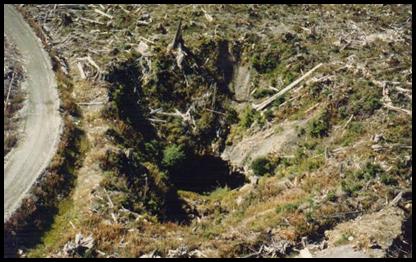
Figure 3 The surface and subsurface components of forested karst ecosystems. Photo courtesy of Island.Net
The regulation of forest practices has changed recently to place more responsibility on licensees, their contractors and equipment operators to deal with karst features and karst terrains. Under the Forest Practices Code of BC Act, government was responsible for managing and conserving karst. Now, under the Forest and Range Practices Act (FRPA), individual forest districts can simply make orders that designate karst features as “resource features” via FRPA’s Government Actions Regulation [1] . If so designated, the Forest Planning and Practices Regulation requires that a person carrying out harvesting, silviculture or road construction or maintenance ensure that those practices do not “damage or render ineffective” resource features. That leaves it is up to licensees and their employees and contractors to decide how to ensure that their field practices meet this test.
Recently, the Queen Charlotte Islands Forest District manager implemented the first karst identification order in B.C. Similar karst orders are likely to follow in other coastal districts. The order identified three types of karst features as “resource features” wherever they occur in that district:
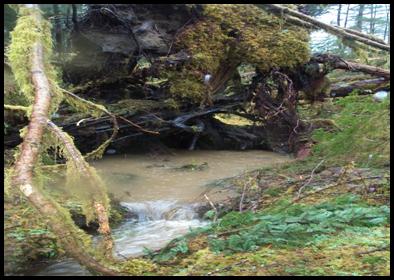
Figure 4. Surface karst features include karst springs. Photo courtesty of MOFR
Those orders rely on forest companies and machine operators to recognize and avoid damage to karst. If karst is damaged by inattentive or uninformed licensees or operators, it is not yet clear what level of damage would trigger a penalty . Physical damage such as blowing up karst formations during road building may be fairly obvious, but what test will district managers apply to determine if forest practices “render” a significant karst feature “ineffective”?
FRPA encourages, but does not require, licensees to use professionals to design and carry out forest practices that protect karst. The main incentive for licensees to employ professionals is to be able to use the defence of due diligence.
If identified karst resource features are damaged, a licensee can avoid a fine by proving due diligence, which means taking all reasonable care to avoid doing the damage. Reasonable reliance upon a professional’s opinion or recommendations would be a strong indicator of such care. Still, reasonable reliance may be difficult for karst because no single professional body has the necessary expertise. This is a complex subject, where geoscientists, engineers, biologists, hydrologists, foresters and archaeologists may need to work together. Nevertheless, there are karst experts available in B.C. and the suggested management practices in the Karst Management Handbook can also help inform forest workers.
How effective will licensees be at protecting karst in coastal BC from damage due to forest practices? The answer remains unknown. We know that karst is a resource that, particularly on the BC coast, is sensitive to damage from forest practices. Government no longer protects karst by checking and approving forest practices. Instead, those who carry out forest practices must themselves determine how best to carry out forest practices in a way that avoids damaging identified karst features.
This shift of responsibility for karst stewardship, from government to industry, requires that licensees, their professionals, contractors and equipment operators all learn about karst, its identification, its sensitivity and its protection. More information on karst can be found in an on-line training course on the Ministry of Forests and Range website at http://www.for.gov.bc.ca/hfp/training/00008.
Dr. Bruce Fraser, Chair
Forest Practices Board
VICTORIA – The Forest Practices Board has released its annual report for 2005/2006. The annual report details the key findings and topics the board has examined during the past fiscal year. The annual report gives the public an idea of the diversity of issues brought to the board through random audits, investigations of public complaints, special projects, and administrative appeals.
The board’s primary role is to assess how well forest licensees and government agencies are complying with legislation on the ground. The annual report also includes projects and new initiatives that will ensure that the board will be ready when the Forest and Range Practices Act is fully implemented in 2007-2008.
The report is available on the board’s website, or by contacting the board at 1-800-994-5899.
Erik Kaye
Communications
Forest Practices Board
Phone: 250-356-1586 or 1-800-994-5899
VICTORIA – A Forest Practices Board audit released today found that the operations of Stuwix Resources Ltd., in the Cascades Forest District, have fully met the requirements of forest practices legislation.
“The board is pleased to find that Stuwix Resources Ltd. received a clean audit while harvesting beetle infested trees,” said board chair Bruce Fraser. “Although the audit identified a few instances where water management during road construction should be improved, the board recognizes that the company is making a constructive effort to upgrade its overall road construction practices and encourages Stuwix to implement these changes.”
The audit report covered forest operations carried out by Stuwix’ on forest licence A65006, located mainly to the north, south and east of Merritt, in the Merritt Timber Supply Area. Auditors examined operational planning; construction, maintenance and deactivation of roads; timber harvesting; silviculture; and fire protection activities carried out between June 1, 2005, and June 28, 2006.
The Forest Practices Board is an independent public watchdog that reports to the public about compliance with the Forest and Range Practices Act and the achievement of its intent. The board’s main roles are:
Erik Kaye
Communications
Forest Practices Board
Phone: 250-356-1586 or 1-800-994-5899
VICTORIA – The Forest Practices Board has given West Fraser Mills Ltd. and Ainsworth Lumber Company Ltd. clean audit results for forest practices in the 100 Mile House forest district.
The board audited West Fraser’s activities under forest licence A20001, mainly focused on the northeast portion of the district, as well as Ainsworth’s activities under a pulpwood agreement to supply fibre to its oriented stand board plant in 100 Mile House.
The audit covered harvesting, road activities and associated planning that took place between July 1, 2005 and July 14, 2006.
“We are pleased to note that both companies complied with forest practices legislation with respect to timber harvesting and road construction, maintenance and deactivation,” said board chair Bruce Fraser.
The Forest Practices Board is B.C.’s independent watchdog for sound forest and range practices, reporting its findings and recommendations directly to the public and government. The board:
Erik Kaye
Communications
Forest Practices Board
Phone: 250-356-1586 or 1-800-994-5899
VICTORIA – The Forest Practices Board has given Chunzoolh Forest Products Ltd. a clean audit for its harvesting of beetle-infested timber in the Prince George Forest District.
The board audited Chunzoolh’s non-replaceable forest licence A72190, which authorized the company to cut 50,000 cubic metres of timber infested by the mountain pine beetle. The beetle epidemic has hit the interior of the province especially hard and the auditee focused all of its harvesting activities on the salvage of infested stands.
“Given the pressure to salvage infested stands quickly while they are still commercially viable, the board is pleased that Chunzoohl is in full compliance with the requirements of forest practices legislation relating to timber harvesting and road construction, maintenance and deactivation,” said board chair Bruce Fraser.
The audit covered harvesting and road activities, and associated planning, by Chunzoolh between July 1, 2005 and July 13, 2006.
The Forest Practices Board is B.C.’s independent watchdog for sound forest and range practices, reporting its findings and recommendations directly to the public and government. The board:
Erik Kaye
Communications
Forest Practices Board
Phone: 250-356-1586 or 1-800-994-5899
